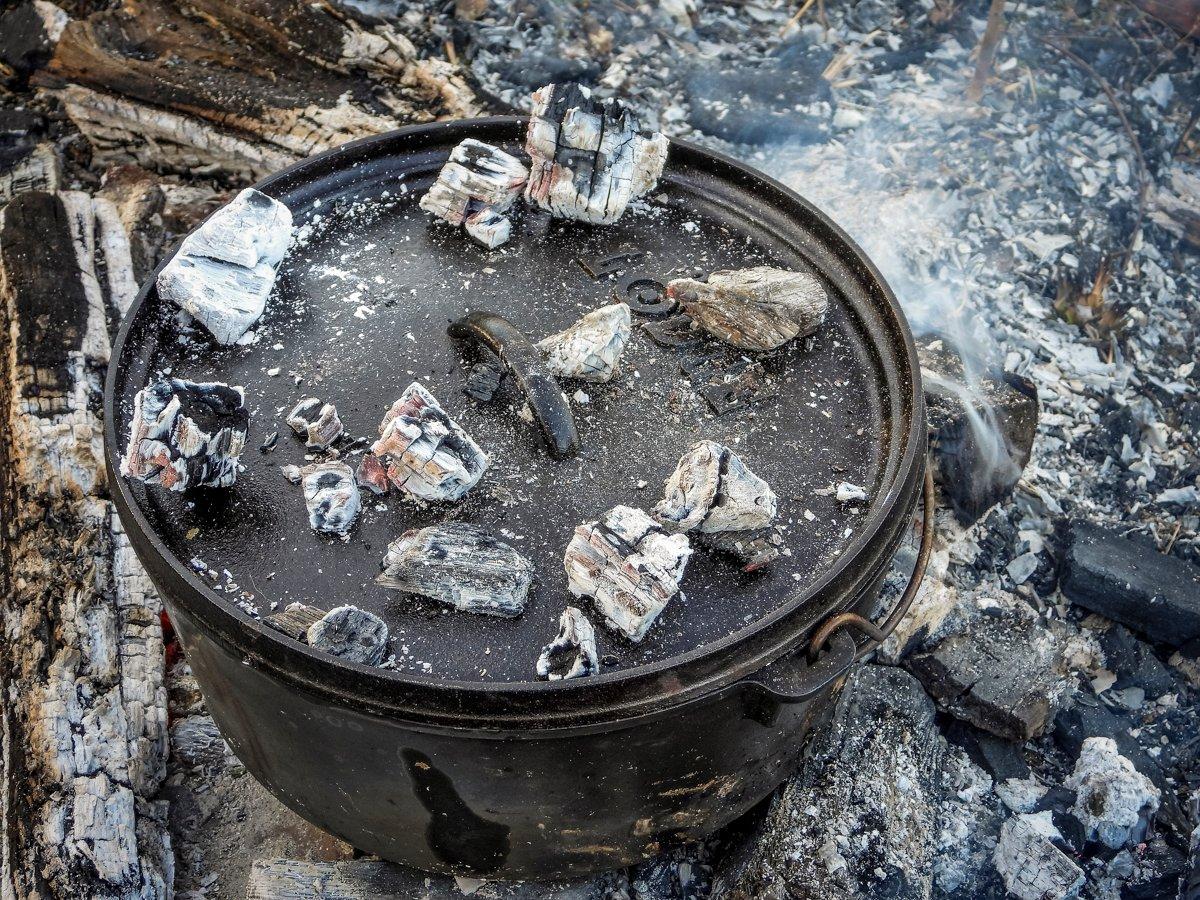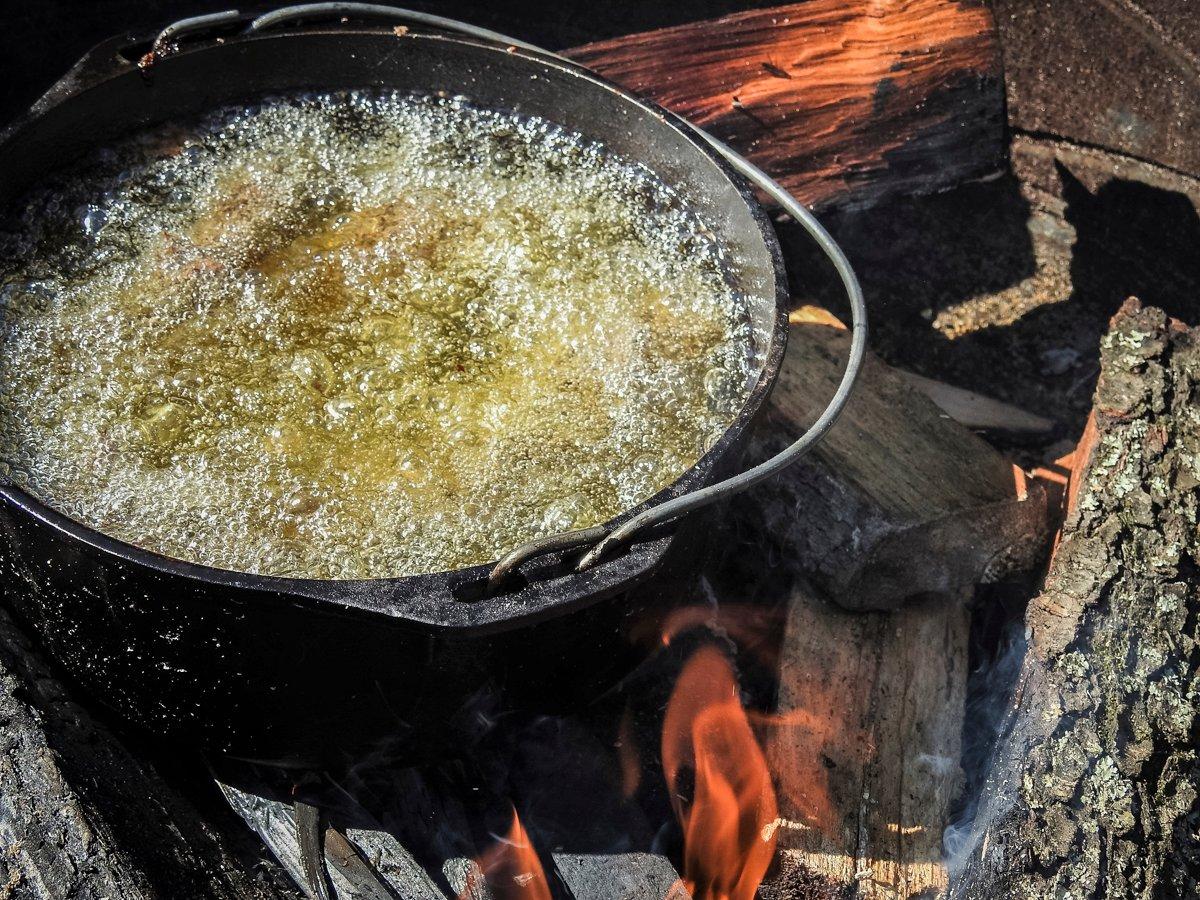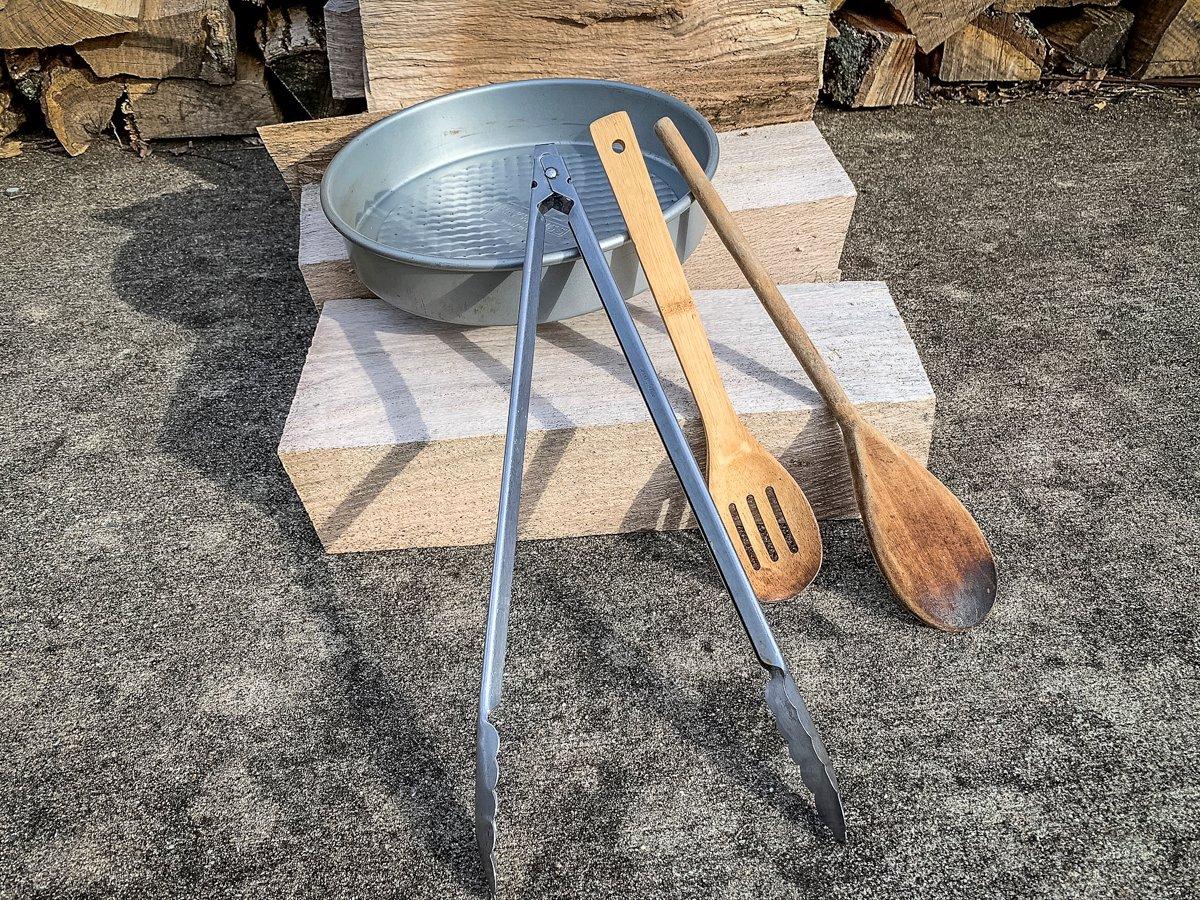Here's the stuff you need for preparing delicious camp meals with cast iron and hot coals
We share a lot of Dutch oven recipes here on Timber2Table. From baking to frying, braising to slow simmering, Dutch ovens get used in camp for breakfast, lunch and dinner. Dutch oven recipes are usually delicious but the beauty of cooking with them is that they're simple. Using and maintaining them only calls for a few favorite tools. Here's a list of ours.
The Ovens
For most of our camps, three Dutch ovens handle the bulk of our cooking needs. A pair of 12-inch Lodge Camp Ovens with flat, rimmed lids are the workhorses. The 12-inch size is perfect for a family or large camp full of hungry hunters. The camp ovens have three legs to support them and keep just the right height over a bed of coals. The flat lid holds additional coals, and the rimmed edge keeps them in place. Supplying heat from both the top and bottom is the secret to even baking and slow braising.
For soups, stews and chili, a 10-inch domed lid oven with a metal bail handle and a flat bottom works well either sitting atop a cooking grate or suspended over the fire by a chain from a metal tripod. If we are going to be making sauces or side dishes, a smaller 6-inch oven and a cast-iron saucepan or two sometimes get added to the kit.
Lid Handling
Dutch oven lids get hot. Red. Scalding. Hot. You don't want to grab them with your bare hands. We use both a pair of heavy-duty slip-joint pliers and an iron lid lifter for picking up hot lids to add ingredients, check doneness, stir, etc.
Safety Gear
If you are going to work around an open fire and hot iron, you need to protect your skin. We use a pair of heavy-duty leather welding gloves to cover our hands and forearms. They are designed to protect from extreme heat and are perfect for reaching over a fire to reposition a Dutch oven. A heavy leather apron also helps protect you from blowing embers.
Always wear long pants and close-toed shoes when cooking around a fire. I love my Realtree Crocs around camp, but trust me when I say that you don't want an errant ember to fall down one of those little holes on top.
Cooking Gear
A Lodge Camp Tripod is perfect for suspending a Dutch oven over your firepit. The tripod's legs disassemble into three sections, and everything fits in a convenient travel case for easy packing. The pot hangs from a chain dangling from the center cross of the tripod. To adjust heat levels, just move the pot up or down the chain, closer or farther away from the fire.
When you lift a lid from the pot, you will need a clean spot to rest it while you work on your food. Laying it on the ground just gets it covered in dirt, ash, grass and leaves. Sure, a rock will work, but finding a nice flat one isn't always easy. To give us a nice stable lid rest, we always pack a couple of cast-iron folding trivets. They fold flat for packing and hold the lid a safe distance above the ground when needed. We also use the trivets to hold a baking pan inside the Dutch oven when we want to bake a small amount without making a mess of the entire oven.
Utensils
A long set of metal tongs are perfect for reaching into a Dutch oven to flip and move food around. They also work well for moving individual coals around and adding them to the oven's lid. For moving more coals at once, a small metal shovel is perfect.
For moving and stirring food, a couple long-handled wooden spoons get the job done. As mentioned above, a few small aluminum baking pans are perfect for resting atop a metal trivet inside a Dutch oven. You can cook biscuits, cobblers, cakes, brownies, or just about anything else that bakes in these pans and have less mess than cooking directly in your Dutch oven.
Clean-Up
For cleaning everything, I like a Scotch Brite pad and sponge combo. With a little warm water, it will clean just about anything you cook in a well-seasoned oven. If you have a bit of stuck-on food, a sprinkle of Kosher salt before scrubbing provides a bit of extra abrasiveness.
Despite the oft repeated mantra to never use dish soap on cast iron, use it if you need it. It won't hurt the seasoning at all. If I had to guess, I'd say the old wives' tale had its basis in old-style soaps containing lye. Modern dish soap is mild enough to use anytime you need it to get your Dutch oven or other cast iron clean. Just rinse it well and warm it over the fire to dry before storing the pot.













